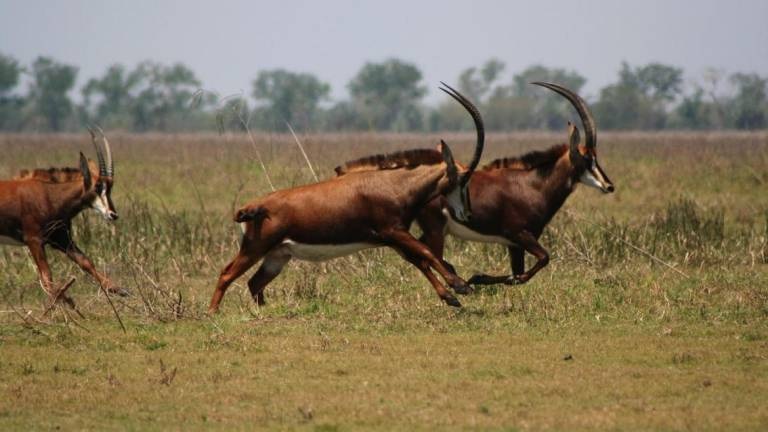CBA-Scale+ project takes shape in Mozambique with validation of Community-Based Adaptation Action ...
Wars decimate wildlife in Africa, but Gorongosa surprises

Lusa (File photo)
Conflicts in Africa in the last 65 years have affected 70 percent of the countries’ natural parks and decimated their fauna and forests, a study on biodiversity in African reserves by two North American researchers indicates.
Robert Pringle and Joshua Daskinos, who specialise in ecology at Princeton and Yale Universities, point out that more than 70 percent of protected areas have been directly affected by wars, leading to a decline in virtually all 253 populations of the 36 species in 126 reserves analysed.
According to the study, published in the journal Nature, the worst impact has been on large herbivores living in national parks and other protected areas: elephant, hippo, giraffe, buffalo and antelope, and was more devastating than human activities such as mining, urbanisation or trafficking of animals.
However, the authors point out that there is some hope: except for rare exceptions, populations have not died out. Furthermore, they point out that, in some cases, they have recovered, sometimes with great rapidity, when conditions return to normal.
An example of this is the resilience of the animal population in the national park in Gorongosa, Mozambique, “an extraordinary territory that has lost all leopards and hyenas, as well as most lions and elephants as a result of more than 20 years of civil war”, which ended in 1992.
“Now Gorongosa is recovering at a steady pace,” the two experts say, noting that the end of colonialism, not only in Mozambique but also in other African countries, was followed by violent and bloody power struggles.
Local inhabitants, they say, were forced to invade protected areas to obtain meat for food, and also products such as ivory to finance military activity, displacing respect for animal protection.
Standing out among the protected areas most affected by years of conflict, besides Mozambique, are reserves in Angola, Burundi, Chad, Eritrea, Ethiopia and South Sudan (included in Sudan until 2011).
On the other, the huge national parks in Tanzania and Zambia have managed to enjoy relative calm over the past six decades, a situation that the study says is now also obtaining, to a greater or lesser extent, in countries like Cameroon, Congo, Gabon and Senegal.
The study also points out that only three small countries, all island states – Africa has 55 nations – have not faced armed conflicts: Cape Verde, Sao Tome and Principe and Mauritius.
“It is enough for a conflict to erupt in the vicinity of a wildlife park for mammal populations to begin to show the effect,” the two biologists say, noting that 80 percent of recent wars in Africa have occurred in areas of great ecological diversity.
Although the effect of the wars on biodiversity seems obvious, it is not at all, Robert Pringle insists, since human intrusions brought about by wars or even mining activity can actually benefit the fauna, as was noted in the 1964-1979 civil war in former Rhodesia (now Zimbabwe).
Similarly, the war in Rwanda in the mid-1990s coincided surprisingly with the resurgence of mountain gorillas, which the two authors consider “unusual”.
“Ecological data from conflict zones is scarce, making it difficult to study the effects of war on wildlife. This is, however, the first study to examine them on a continental scale over a period of decades,” Pringle concludes.












Leave a Reply
Be the First to Comment!
You must be logged in to post a comment.
You must be logged in to post a comment.